A few years ago I found myself managing an art gallery. A step aside from the fashion industry for a period of time, and something I had always wanted to do. Part of the role in the beginning was to work on the design and fit out of the space. This process introduced me to the designs of Darcy Clarke. Over my time at the gallery, I grew to love his work more, with the space having utilised many of his NED seats; of which I found a perfect fit for a gallery as they created interest, somewhat a sculpture themselves, and somewhere to sit while viewing the artworks. From here my interest grew and while I have been back in the world of fashion once again, I do miss those NED seats every day! I recently caught up with Darcy to share with you more about this talented designer.
TMHS: How did you find yourself designing furniture and lighting? Did one come before the other?
DC: Well, it seemed like a good idea at the time! In 2000, I decided to start a business after I had not long moved to Byron Bay. That was a fair leap at that time, when I had no business experience and not much idea about the furniture design world. So, needless to say, I’ve learned a lot over the years. I’ve always had an interest in furniture but my early passion was sculpture, installation art and then later architecture, having studied both Art and Architecture at the UNSW. The lighting designs have been definitely more successful at keeping my business going. I’m much more known for lighting design than the furniture design which is still evolving. But right now, my design challenge is to build the Darcy Clarke brand into a great company that will last longer them me. I’ve not done this before, so it is an exciting ‘learn on the job’ role.
TMHS: Where do you look for inspiration for your designs?
DC: Everywhere. I look for inspiration all the time. This is what it is all about – the creative spirit and my hunger for creative expression.
TMHS: Tell me about the design process you go through from inspiration through to finalising a design.
DC: My design process can vary. I don’t have a hard and fast rule and it often takes years to get a finalised design that is selling. Generally, I’m sketching concepts, which then need to be drafted for other people to understand the exact details. Then there is the process of finding a manufacturer and prototyping. That is a whole story in itself. At other times the idea is there in my head and just needs to be made. Also, I do often get focused on a material and like to play and experiment to see what I can come up with. Often, designs are not finished for years and even when they are made and finished I will improve a detail if it will make the design better. I reckon the number of designs in the sketch books are 4 times those that are made. Making them all is a massive task. I’m admitting to you here that I have an issue with details and things that aren’t well made. I figure if I’m happy with the details then others will be too and they appreciate that. On the one hand a well made object gives a sense of joy, but if things are not done well it drives me mental. These are the things that most people don’t notice. I have to remind myself that. I often have to take a picture of the design to appreciate them as a finished item, because I’m always looking to perfect details.
TMHS: I notice you have new ventures “Creative Hatch” and “Creating a Difference”. Can you tell me more about these?
DC: Yes, I’m very excited about these still works in progress. They are evolving like most ideas do when put into the world. I’m at the stage where I need capital and crowd funding seems the go. Essentially these two ventures are about helping other creative people in their business practice. There is a whole story, but the motivation for me to start these was when I was in Suva, Fiji. I was invited to attend and speak at a business and entrepreneurial conference for creative people in the Pacific. I jotted down the first ideas there and when I got back from Fiji I started to write Creating a Difference – business tips for artists to be business people. This is a great little business guide and the first thing I’ve written to be published. I’m super excited.
Creative Hatch is the vehicle to take this business advice to the world. It will hopefully help as many people as possible world-wide. It is also a work in progress and I expect it will change a lot as time goes on.
TMHS: What has been one of your favourite projects you have worked on? Tell me about why you loved working on it.
DC: Wow, a great question! It is difficult to have a favourite! Essentially, the objective of my products is to add value to the interiors they are selected for, so if they can enhance people’s everyday lives in some way, then that is what it is about.
TMHS: Your favourite furniture piece you have designed and why?
DC: The NED seat. Mainly because of the story and connection I have to it. I think it is a very Australian design (I mean this in the Irish Australian bush way). It is about bush innovation. Of course, the shape clearly resembles the Kelly helmet which is bush innovation at its best – and a great Australian design icon. However, this wasn’t the motivation for the shape originally. The shape is about dealing with timber moisture loss and the drying process in a solid lump of timber. The original Ned seat was made in 2004, but I re-branded the product two or three years ago. A process I’ve not done before, but it made sense and made the product better.
TMHS: Your favourite lighting piece you have designed and why?
DC: I love most of the designs. The woven lamps are the signature designs, however, the Bonita is my current favourite. Again, I love the story of the product, the shape and the way it is made. Also, because it was the start of a really new challenge for me. It was designed and made in 2009 and has been doing really well over the last 2 years.
TMHS: Where around the world has your design work taken you? How has this helped you grow as a designer?
DC: That is the immense part of the job and it helps that I love to travel. It has taken me to Milan, Barcelona, Paris, New Zealand, Singapore, Los Angeles, New York, Fiji, Philippines and Vietnam.
TMHS: Three things you can’t do without in your day?
DC: Coffee, Love and Oxygen.
TMHS: What does a typical day off for Darcy Clarke consist of?
DC: As a creative person there is not really a set day off. If I want to work I work. To switch off I enjoy being with friends, I love to play football (e.g. soccer) and I am a mad keen surfer. A bit of beach or nature time, exercise and movie watching.
TMHS: Tell me a little more about your involvement with the Fred Hollows Foundation and Medecins San Frontieres.
DC: These are the two charities that the business donates to every month and have done for perhaps five to six years. I like what they stand for and what they do for people.
TMHS: How can people find out more about what you do?
DC: On the Darcy Clarke website (www.darcyclarke.com) we have a news page. Also, if you like the Darcy Clarke Studio page on Facebook (www.facebook.com/DarcyClarkeStudio), you will find a more personal touch here with links to our press and newsletters. The other way to keep in touch is our newsletter, currently we are doing six per year. These are the best ways to connect with what we are doing.
All photos: Christina Waterson
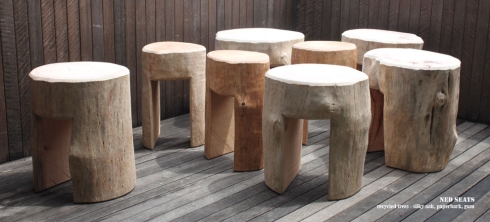

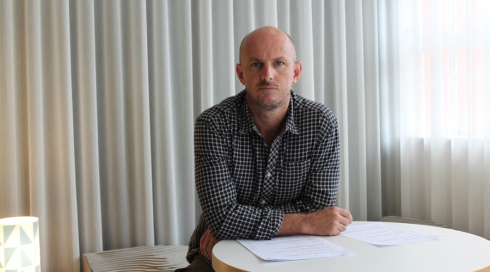
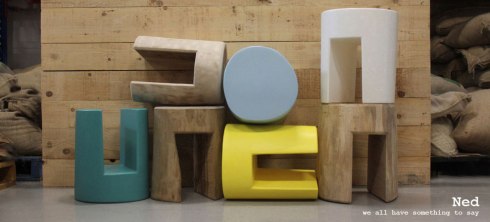
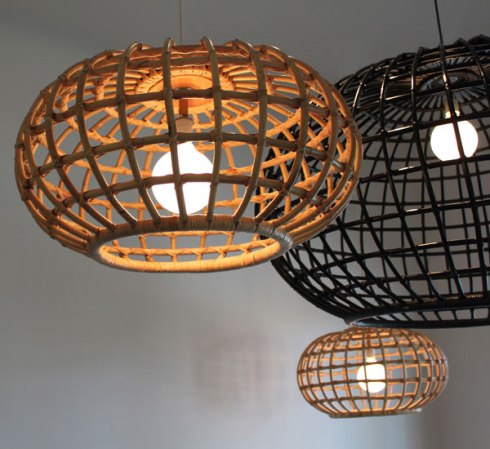
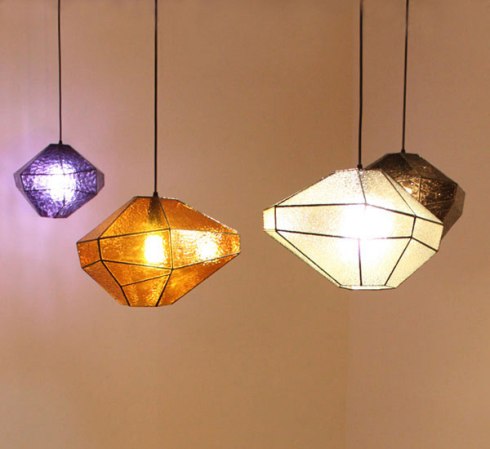
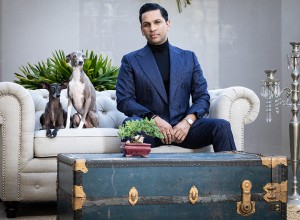
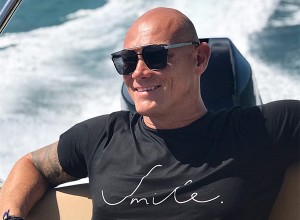
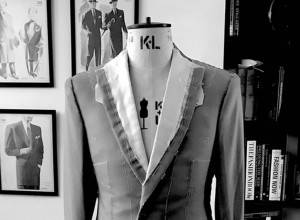
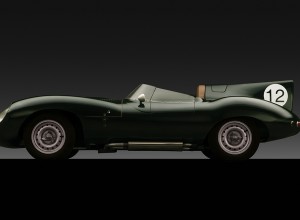

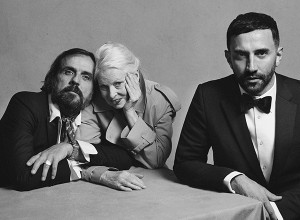
March 20, 2014
Hi , my name is Ruth and I am interested in purchasing one of your woven pendants lights , they appear to be inspired by an aboriginal design. I hope they still available.
March 20, 2014
Hi Ruth,
Thanks for your message. The designs of Darcy Clarke are quite beautiful.
You can contact Darcy Clarke direct via email for purchasing details – australia@darcyclarke.com
Thanks!
March 20, 2014
Hello Ruth,
I’m definitely inspired by Aboriginal weaving. I’ve just finished a pendant called Gynara which is made in collaboration with aboriginal artist. I’ve design it and they make it. You can see them on the facebook page and I can send images via email.
Look forward to hearing from you soon.
Cheers,
Darcy Clarke